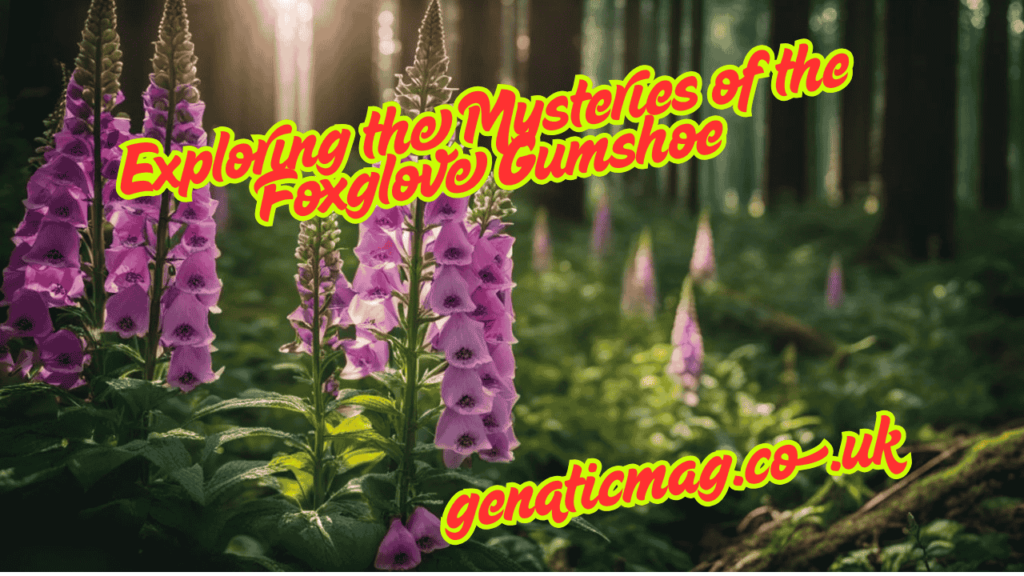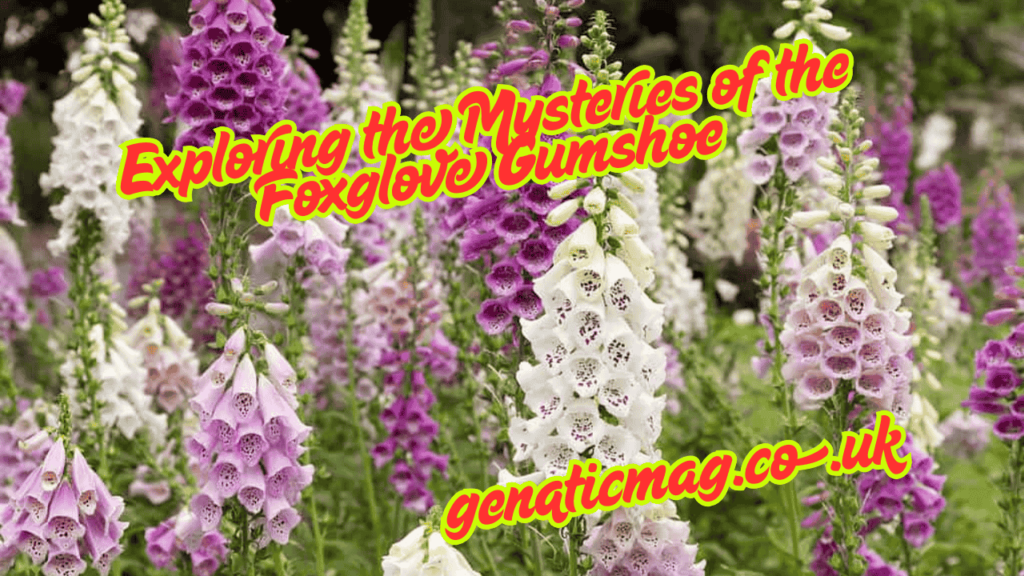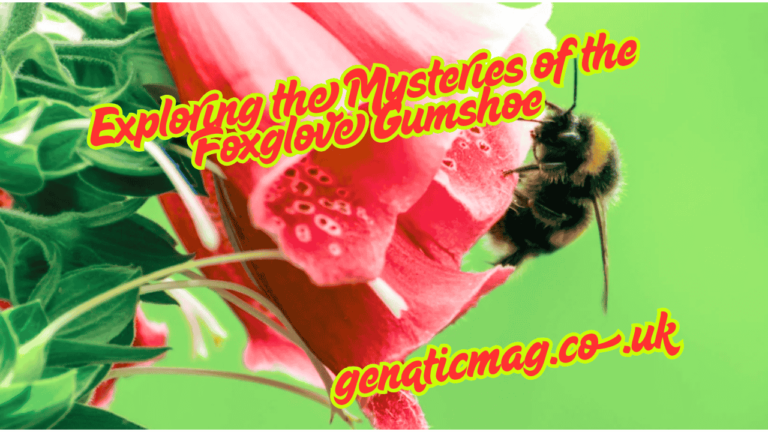In a society replete with crime-solving legends and mysterious investigators, one name stands out – the Foxglove Gumshoe. Known as much for their quick intuition as for its cryptic nature, the Foxglove Gumshoe has attracted storytellers and mystery aficionados alike. But what is it about this illusive figure that attracts the imagination? Why the lingering “??” in their tale? Today, we go deep into Exploring the Mysteries of the Foxglove Gumshoe, ??, revealing the layers of lore, talent, and mystery that envelop this renowned figure.
The Origin Story: Exploring the Mysteries of the Foxglove Gumshoe, ??

The tale of the Foxglove Gumshoe is as enigmatic as the character itself. Some say the name was born from a simple observation — foxgloves, the delicate yet deadly flowers, symbolizing hidden danger and duality. Just like the flower, the Foxglove Gumshoe operates under a cloak of beauty and peril.
The “??” attached to the name adds another layer of mystique. It hints at unanswered questions, unresolved cases, and the ever-present mystery surrounding their true identity. Was the Foxglove Gumshoe a single person or a lineage of detectives carrying the title forward? In Exploring the Mysteries of the Foxglove Gumshoe, ??, we are reminded that some puzzles are meant to remain unsolved — perhaps intentionally.
The Skills Behind the Legend: Exploring the Mysteries of the Foxglove Gumshoe, ??

While the true history remains obscured, what is widely agreed upon is the Foxglove Gumshoe’s extraordinary set of skills. Sharp observation, intuitive reasoning, a mastery of disguise, and an uncanny ability to read human nature are just a few attributes often linked to them.
Unlike traditional detectives who rely heavily on technology, the Foxglove Gumshoe is often portrayed as a master of the old ways — shadowing suspects, decoding body language, and using the environment to their advantage. In Exploring the Mysteries of the Foxglove Gumshoe, ??, it becomes clear that their expertise is not in raw power but in delicate, thoughtful maneuvers that leave almost no trace.
Symbolism and Deeper Meanings: Exploring the Mysteries of the Foxglove Gumshoe, ??

The foxglove flower isn’t only a moniker – it reflects the essential essence of the Foxglove Gumshoe. In tradition, foxgloves were connected with the fae, the mysterious and sometimes mischievous beings supposed to reside on the outskirts of human comprehension. This relationship provides a mystical touch to the gumshoe’s mythology.
Additionally, the “??” could represent the existential question every detective faces: Can the full truth ever be known? In Exploring the Mysteries of the Foxglove Gumshoe, ??, we uncover not just a detective’s journey but a philosophical exploration about the nature of truth, justice, and the human tendency to seek closure in a world built on ambiguity.
The Notable Cases: Exploring the Mysteries of the Foxglove Gumshoe, ??
Throughout the whispers of the Foxglove Gumshoe’s tales, certain legendary cases are often cited. The Disappearing Heirloom, The Puzzle of the Hollow Tree, and The Vanishing Footsteps are just a few examples of cases where the Foxglove Gumshoe’s unique methods shone.
In Exploring the Mysteries of the Foxglove Gumshoe, ??, we see how each case was more than just a mystery — it was a testament to their unconventional wisdom. They solved crimes without grandstanding, often leaving authorities and criminals alike in awe and confusion. Victories were rarely boasted about, and failures (if any existed) were woven into the mist of their growing legend.
Why the Foxglove Gumshoe Matters Today: Exploring the Mysteries of the Foxglove Gumshoe, ??
In a digital age where mysteries are often solved with forensics, satellite tracking, and data mining, the legend of the Foxglove Gumshoe serves as a reminder of a different kind of intelligence — one that relies on patience, human connection, and intuition.
As we continue Exploring the Mysteries of the Foxglove Gumshoe, ??, it becomes clear that their story is timeless because it champions the idea that sometimes the human element cannot be replaced by machines. In an increasingly mechanized world, the Foxglove Gumshoe embodies a romantic ideal of mystery-solving that remains deeply human at its core.
Theories Surrounding the “??”: Exploring the Mysteries of the Foxglove Gumshoe, ??
One of the most captivating aspects is, of course, the “??” that follows the name. Scholars and fans alike have proposed various theories:
- A Secret Society: Some believe the Foxglove Gumshoe was not a person but an elite secret society of detectives, each carrying the title forward.
- Unfinished Legacy: Others suggest the “??” signifies the unfinished business of the Gumshoe — that they disappeared before solving their final, most important case.
- Multiple Identities: Another theory posits that many individuals took up the mantle over time, each adding their story to the cumulative mystery.
Exploring the Mysteries of the Foxglove Gumshoe, ?? opens the door to infinite possibilities, each as tantalizing as the last.
The Enduring Appeal: Exploring the Mysteries of the Foxglove Gumshoe, ??
Why does the Foxglove Gumshoe remain such a captivating figure in mystery lore? Perhaps it’s because, in a world so obsessed with certainty and clear answers, they represent the allure of the unknown. The careful blend of skill, secrecy, symbolism, and open-ended questions ensures that their story remains perennially fresh.
When we are Exploring the Mysteries of the Foxglove Gumshoe, ??, we are not just investigating a detective; we are engaging with a broader, timeless mystery — the mystery of human nature itself.
Final Thoughts: Embracing the Mystery
In the end, the Foxglove Gumshoe defies easy categorization. Whether seen as a master sleuth, a collective spirit, or a mere legend shaped by the imagination, one thing remains certain — their story invites us to think deeper, look closer, and accept that sometimes the greatest truths lie within the greatest mysteries.
As we conclude Exploring the Mysteries of the Foxglove Gumshoe, ??, we are left not with answers, but with wonder — and perhaps, that’s exactly as it should be.
Also Read : Exploring the Mysteries of the Foxglove Gumshoe
